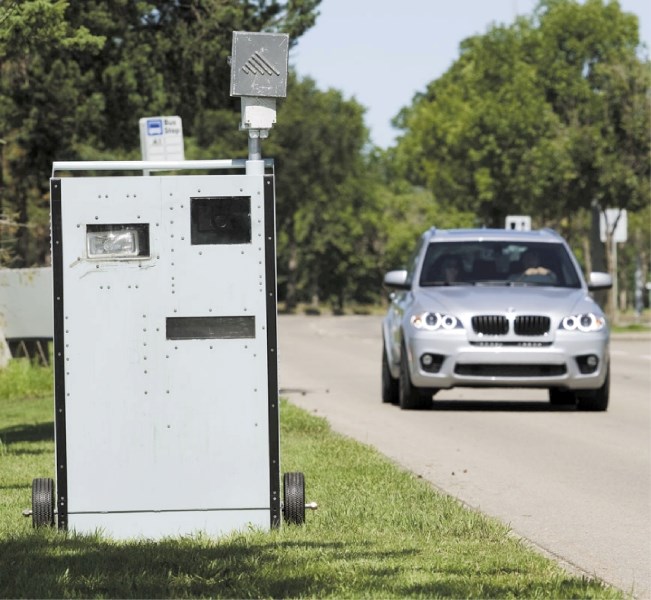Photo radar will soon be a thing of the past in Strathcona County, but it remains to be seen if St. Albert will follow suit.
Councillors in the municipality voted 5-4 Tuesday to replace their photo radar enforcement units with new peace officers by September 2012 at the latest.
But St. Albert councillor Cam MacKay said that, even though photo radar is a sticky subject in St. Albert, he wasn’t sure there would be an appetite among councillors here to make the same sort of move.
“I don’t think so, but then again, I’m not a mind reader. You never can tell. But I think St. Albert would be quite resistant to this,” he said. “I think photo radar serves a role in the city. It would just be nice if it was used less frequently.”
And with the revenue photo radar generates, MacKay conceded removing it altogether might be a tough pill to swallow.
“If we were to reduce photo radar to zero, I think that would necessitate a two to three per cent tax increase, so it’s a tough decision for us to make,” he said. “In Strathcona County, they’ve got a lot of oil refinery money, so it’s easier for them to do things like this.”
In St. Albert, the debate over photo radar flared up again recently with the city’s addition of a remote unit to its enforcement arsenal, as well as comments made by provincial Minister of Employment and Immigration Thomas Lukaszuk on Twitter in late August.
Coun. Brian Botterill, who brought forward the motion at Strathcona County council, said the motivation behind the move was about increasing safety while striking a balance between that and fairness to motorists.
“Photo radar can be good at reducing the speed of collisions, but that’s not the root cause of any of our accidents,” he said. “The root causes of our accidents are drunk driving, distracted driving, a surprisingly high amount of driving without licences, and failing to stop at stop signs. And photo radar can’t enforce any of those.”
That’s why he figures putting actual officers on the streets will work better, even though it may cost more money and result in fewer tickets.
“A standard police write-up is a much bigger deterrent because of demerits, and because demerits have the ability to increase your insurance or cause a licence suspension,” Botterill said.
He also noted that human officers could be more lenient in cases where there are extenuating circumstances or speed limits change abruptly.
“When you respect your drivers, most drivers drive reasonably,” he said. “You want to target your enforcement at the unreasonable, unsafe drivers.”
Stu Fraser, the City of St. Albert’s peace officer program supervisor, said the city is contractually obligated to their photo radar service provider for one more year, and has asked for an extension while a long-term policing plan review is conducted.
“One of the considerations in that is not just the automated traffic enforcement, but the traffic enforcement program,” he said. “I can’t see our photo radar and intersection safety devices disappearing — certainly not until the end of the contract, because the penalty provisions would make it prohibitively expensive.”
The motion passed by Strathcona County does away with neither red light cameras nor speed on green cameras at intersections. Botterill said those are important to keep because intersections are troublesome spots for collisions.
“The majority of our serious accidents are happening at intersections, so even if you can just slow them down to the point of not having an accident, you are going to take some of the severity out of the collisions.”
Fraser agreed, saying cameras are the safest option for patrolling intersections.
“I see a role for us going forward for intersection safety devices no matter what, because it’s very difficult to police red light offences in a traditional manner — you don’t want the police car running the red light even later than the violator,” he said.



